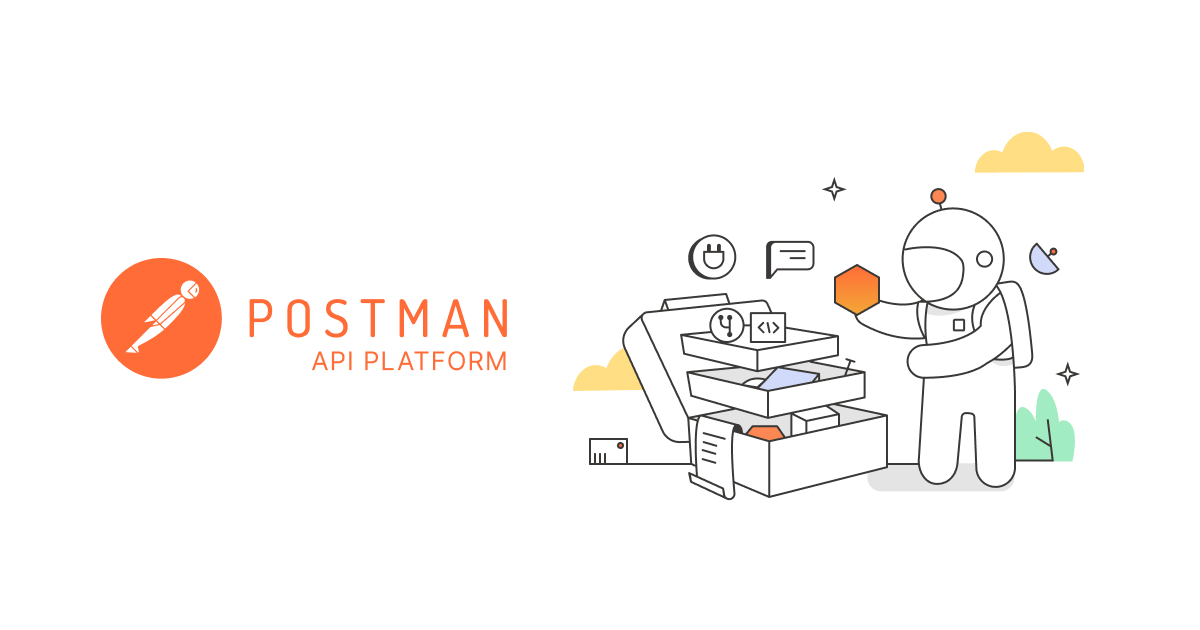API Automation Testing using Postman
Dive into the world of API automation testing with Postman. Learn how to create your first API request and automate your tests. Start exploring Postman today!
Welcome to our comprehensive guide on API Automation Testing using Postman! In the ever-evolving world of software development, APIs have become the building blocks of modern applications. Ensuring their robustness and reliability is crucial, and that’s where API Automation Testing comes in.
In this post, we’ll explore how Postman, a powerful and popular tool, can simplify and streamline your API testing process. Whether you’re a seasoned developer or just starting your journey in API testing, this guide will provide valuable insights and practical steps to enhance your skills. So, let’s dive in and discover the power of API Automation Testing with Postman!
First things first, what is Postman? Postman is a popular tool used by developers and testers in many industries. It’s primarily used for API testing, and it’s loved for its user-friendly interface and rich features.
What is API Automation Testing?
API Automation Testing, also known as “API test automation”, is akin to a health check for your software. It’s all about ensuring that the APIs, which are the building blocks of your software, are functioning as they should.
The main objectives of API Automation Testing are:
- To ensure the APIs function correctly
- To validate their features
- To improve the efficiency of the testing process
API Automation Testing involves using a testing tool to programmatically execute API tests at certain times or frequencies or in CI/CD pipelines. It plays a crucial role in ensuring the robustness and reliability of software applications. APIs serve as the building blocks of software in this approach, and their quality directly impacts the application’s overall performance1.
How Does API Automation Testing Work?
API Automation Testing is a process that involves using a testing tool to programmatically execute API tests. Here’s a general overview of how it works:
- Understanding APIs: APIs, or Application Programming Interfaces, allow software applications to communicate with each other. They work in the background, fetching the data you see on your screen.
- Creating Test Scripts: Test scripts are created to interact with the API in various ways. These scripts trigger responses that can be analyzed and compared against expectations. The test scripts usually use HTTP requests to send and receive data.
- Executing Tests: The test scripts are executed at certain times or frequencies, or in Continuous Integration/Continuous Deployment (CI/CD) pipelines. This allows for efficient validation of APIs, ensuring they function as expected and adhere to the required standards.
- Analyzing Responses: The responses from the API are then analyzed. This analysis can be simple, such as verifying that an API is returning the correct data, or it can be more complex, such as simulating user interactions with an API.
- Validating Results: The results of the tests are validated to ensure the API’s behavior and functionality meet the expected outcomes.
API Automation Testing plays a crucial role in ensuring the robustness and reliability of software applications. It allows for efficient validation of APIs, ensuring they function as expected and adhere to the required standards. Moreover, it becomes even more critical in an API-first development approach, where applications are built by linking several different APIs.
Why Use Postman for Automation Testing?
Now, you might be wondering, why use Postman for automation testing? The answer is simple. Postman makes it easy to test, develop, and document APIs. It supports automation, making it a powerful tool for API testing.
Getting Started with Postman
Getting started with Postman is a breeze. You can download it from their official website, and it’s available for Windows, Mac, and Linux. Once you’ve installed it, you’re ready to start testing!

Creating Your First API Request
Creating your first API request in Postman is straightforward. You can start by clicking the “+” button and selecting “Request”.

From there, you can enter your API endpoint, select your HTTP method, add any necessary headers or parameters, and click “Send”. Voila! You’ve just made your first API request.

Automating API Tests with Postman
The real power of Postman lies in its ability to automate API tests. You can write test scripts in JavaScript, allowing you to automate tests and integrate them into your CI/CD pipeline. This can save you a ton of time and help you catch bugs before they reach production.

If you’ve ever crafted tests in JavaScript utilizing testing frameworks such as Jest, the above snippet will likely resonate with you. Allow me to clarify: Every Postman test suite or scenario commences with the test() function, which is made available in the pm (an abbreviation for Postman) global object supplied by Postman. The test method accepts two parameters: the first is the test description, which in our test suite above is ‘Status code is 200’, and the second is a callback function. This function is where you perform your assertions or validate the response of the specific request under test.

Limitations of Postman for API testing
While Postman is a popular tool for API testing, it does have some limitations:
Limited Testing Area: Postman is ideal for RESTful API tests, but it’s not well designed for SOAP APIs and other types of APIs.
Low Script Reusability: Postman users are unable to reuse their pre-written scripts or add more requests. This means testers have to create new test scripts repeatedly for each project.
Constrained Integration: There are some constraints when it comes to integrating Postman with other tools.
Handling Extensive API Requests: Postman may struggle to handle extensive API requests. Specifically, it can run into difficulties when processing more than 1000 API requests, which may pose a challenge for large-scale projects with high request volume.
Testing Web Services: Testing API is straightforward in Postman, but it falls short when testing web services. For example, when testing web services, there is a visual component that can be imported in SoapUI but not in Postman.
These limitations don’t make Postman less useful, but they’re important to keep in mind when deciding if it’s the right tool for your specific needs. It’s always a good idea to consider the requirements of your project and evaluate different tools before making a decision.
Why use Apidog for API test automation?
Apidog is a powerful tool for API test automation, and here’s why:
All-in-One Platform: Apidog is an integrated collaboration platform that provides API documentation, API debugging, API mocking, and API automated testing. It combines the functionalities of Postman, Swagger, Mock, and JMeter into a single system.
Efficiency: Apidog is designed to help teams design, debug, test, publish, and mock APIs faster and more efficiently. It allows teams to work in parallel and establish a contract between services, allowing them to work on multiple APIs simultaneously and improving development speed.
Automation: Automation can be achieved by using tools that import API definition files, reducing the time needed to develop and launch an API. Automated API testing ensures API’s functionality, reliability, and security.
Data Consistency: With a single system and centralized data, Apidog solves the problem of data synchronization across multiple systems. Once the API document is defined, API debugging, data mocking, and API testing can be directly utilized without the need for redefinition.
Load Testing: For load testing, you can easily create test instances, define workflows, and set load conditions using the intuitive GUI.
Apidog is a comprehensive tool for API test automation that provides an efficient, timely, and accurate solution. It’s a great choice for teams looking to streamline their API development and testing processes.

How to make automation testing using Apidog
Apidog is an all-in-one API development platform that connects everyone involved in the API development process. It is designed to help teams design, debug, test, publish, and mock APIs faster and more efficiently. With Apidog, you can build APIs quicker and together, using a better toolkit for developing APIs.
Here’s a step-by-step guide on how to automate API testing using Apidog:
Open your Apidog Project and switch to the testing interface

Design Your Test Scenarios: You can design your test scenarios in Apidog.

Run Your Tests: You can run your tests in Apidog.

Analyze Test Results and Optimize: After running your tests, you can analyze the test results and optimize your tests accordingly.

Remember, Apidog is an all-in-one toolkit for API development. The whole team can work on it together to produce APIs efficiently and conveniently. Each role in the team can use it to solve their own problems.
Best Practices for API Automation Testing
Several best practices should be followed when automating API testing. These include:
Thoughtful Planning and Design: Careful planning and design of automated tests are crucial. This ensures that procedures like UI testing are effective and don’t lead to unforeseen issues.
Frequent Testing: It’s vital to perform different types of API testing such as GUI tests, REST API testing, penetration testing, and regression testing early and often in the software development process. This helps in identifying errors and potential issues before they escalate. Continuous testing is key as errors can arise at any stage of an API’s lifecycle.
Simplicity is Key: Keep automated tests as straightforward as possible. This reduces the likelihood of errors and enhances the probability of success.
Maintain Documentation: Keeping track of what has been tested and what’s next is essential in automated tests. Documentation can also serve as tutorials and training materials for new team members. Moreover, documents should be updated whenever there are changes in aspects like status code, plugins, data formats, API functions, etc.
Utilize a Functional Testing Framework: A framework, which is a collection of tools and libraries, can aid in automating the process of API testing and ensuring that all tests are carried out correctly.
Leverage Integration Software: Integration platforms like DreamFactory allow for the quick and easy creation of APIs. They can also connect to multiple data sources, which can assist in automating API and integration testing.
Conclusion
API Automation Testing is a powerful approach that ensures the robustness and reliability of your APIs. Tools like Postman have made this process more efficient and accessible. However, the world of API testing is vast and constantly evolving. That’s where Apidog comes in. As a free tool, Apidog offers a range of features that can further enhance your API testing experience. So, whether you’re just starting out or looking to level up your API testing game, consider giving Apidog a try. Remember, the key to mastering API testing is continuous learning and practice. Happy testing!





